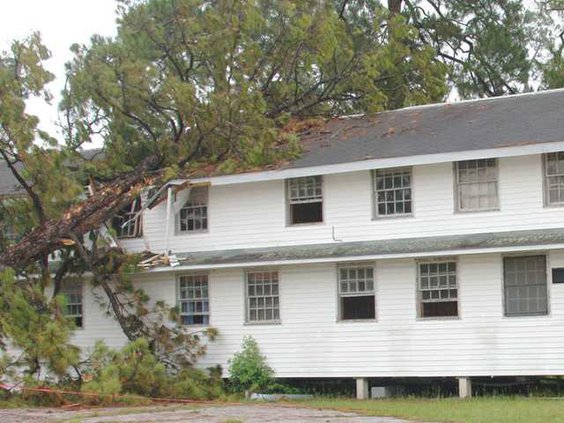South eastern Georgia is known for its unpredictable weather during the summer months, such as thunder storms and hurricanes, This forces residents, new and not so new to the Fort Stewart-Hunter Army Airfield area to stay alert. According to a blog post on the National Oceanic and Atmospheric Administration website, on April 14 of this year, more than 80 tornados occurred in the U.S. Over the past few months the Stewart-Hunter area has seen an increase in the amount of severe thunderstorm watches and warnings, which in turn spawned a few tornado watches and warnings.
This increase is cause not only for concern, but preparation in case of a true emergency. The difference between a tornado watch and a warning is that during a watch, is when the risk of a hazardous weather or hydrologic event has increased significantly, but its occurrence, location or timing is still uncertain.
A warning is issued when a hazardous weather or hydrologic event is occurring, imminent or likely. A warning means weather conditions pose a threat to life or property. People in the path of the storm need to take protective action.
Many people who live or work at Stewart-Hunter may not understand and/or question what the sirens on post mean when activated.
Stewart-Hunter does not activate from information obtained from the National Weather Service because NWS normally announce counties and the installations are surrounded by several counties. The fastest way to communicate a severe weather threat to the installation is via the Emergency Warning System and tuning in to the local radio or television station for additional information. Once the Emergency Warning System is activated, an alert goes out via the automated phone system, followed up by automated e-mail messages to installation leadership, units and emergency personnel. Persons hearing the EWS siren during severe weather should seek shelter immediately and begin monitor the local weather stations even if the tornado message is heard.
"We have conducted numerous severe weather briefings to units and Family Members here and Hunter Army Airfield," said Edward Foerstel, deputy, DPTMS. "We also have posters and flyers across both installations informing them [of] what actions to take in the event of severe weather. All are told to tune to our local television and radio stations for current information."
Foerstel said the EWS is not designed to be clearly audible indoors.
"The key to the system is being able to hear the siren so our Soldiers and Family Members can take timely actions," Foerstel said.
Fleeger explained that when a tornado warning is activated, there’s a high-low alert tone, followed by the tornado warning statement that a tornado warning has been issued for the area, then a the civil siren that lasts about one minute. When the "all clear" is activated, a high-low tone will be heard followed by the all clear message. This message indicates the emergency is over.
"Once that siren goes off for a tornado warning, a funnel cloud could have been spotted," said, Tony Fleeger, an emergency and contingency planning officer for the Directorate of Plans Training Mobilization and Security at Stewart."
Fleeger stated that when a warning is sounded, one of the best places to seek shelter is inside a sturdy building.
"Always stay away from windows and open doors," he said. "Try to go into the center of a building. If you are on a multi-floor building you want to go down to the first floor … and be toward the center of it."
The siren is sounded from information that comes into the Information Operations Center on Stewart-Hunter, from the 18th Weather Squadron based at Hunter and weather updates from 26th Operational Weather Squadron, Barksdale Air Force Base, La.
"These are Fort Stewart and Hunter Army Airfield specific," Fleeger said. "It is not for the whole Liberty County or Chatham County. That’s why some times you will see a warning on the weather channel, but you will not see one for Fort Stewart and Hunter."
A tornado watch does not necessarily come before a tornado warning. Fleeger said a serve thunderstorm can go from storm to tornado warning and skip the watch phase altogether.
"Soldiers, Family Members and Civilians, everybody must be prepared at any given time during a storm to react to a tornado on the ground," Fleeger said. "You don’t want to go into a large building with a free standing roof … you want to go into something with a smaller roof due to the fact that it could come dislodged from the building and then leave the inside vulnerable to the outside weather and winds."
Fleeger said if unable to get inside, find a low point such as a ditch and lay flat and cover your head. If in a vehicle during a tornado, get out quickly and seek shelter immediately.
Stewart-Hunter executes monthly severe weather exercises the last clear day of each month. If the siren is sounded on the last day of the month and the sky is not clear, seek shelter immediately. Most importantly, take each warning as real, albeit an exercise or not, and follow the directions given.

